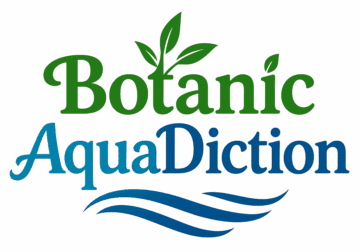
🌿 Plant Profile: Dwarf Water Lettuce (Pistia stratiotes)
| Category | Details |
|---|---|
| Common Name(s) | Dwarf Water Lettuce, Water Lettuce, Rosette Water Lettuce |
| Scientific Name | Pistia stratiotes |
| Pronunciation (IPA) | /ˈpɪs.ti.ə strəˈtaɪ.oʊ.tiːz/ |
| Pronunciation (USA) | PIS-tee-uh stra-TY-oh-tees |
| Family | Araceae (Arum family) |
| Genus | Pistia |
| Plant Type | Floating aquatic plant |
| Plant Structure / Appearance | Forms compact rosettes of soft, velvety leaves that float on the water surface; leaves are thick, ribbed, and covered in fine hairs that repel water; roots are long, feathery, and hang freely below. |
| Color | Pale to medium green leaves; roots are light brown to white. |
| Average Size | 1–4 inches (2.5–10 cm) in diameter for dwarf varieties; larger species can reach 6–10 inches. |
| Tank Placement | Floating only — no substrate required. |
| Growth Rate | Fast to very fast under optimal conditions. |
| Minimum Tank Size | 10 gallons (38 liters) recommended due to rapid spread. |
| Lighting Needs | Moderate to high light. Avoid sudden exposure to strong light immediately after purchase; acclimate gradually to prevent leaf scorch. |
| Temperature Range | 68–86°F (20–30°C). Growth slows below 64°F (18°C). |
| pH Range | 6.0–7.5 |
| Water Hardness | 3–8 dGH (soft to moderately hard). Growth declines above 12 dGH. |
| CO₂ Requirements | Not required. Atmospheric CO₂ is sufficient since leaves float on the surface. |
| Nutrient Requirements | Absorbs nutrients (especially nitrates) directly from the water column. Regular water changes help maintain balance. |
| Propagation | Reproduces vegetatively through stolons (runners). New daughter plants form around the mother rosette and can be separated easily. |
| Maintenance | Remove excess plants to maintain light penetration and oxygen exchange. Trim older yellowing leaves. Avoid covering the entire water surface, as this can reduce oxygen and light levels for submerged species. |
| Compatibility / Tankmates | Safe for fish and invertebrates. Provides shade and refuge for fry and shrimp. May be nibbled by herbivorous fish (goldfish, cichlids). |
| Ideal Uses | Aquariums, paludariums, ponds, and water gardens. Excellent for nutrient absorption and algae control. |
| Special Considerations | Highly invasive in tropical and subtropical outdoor environments — prohibited or restricted in several U.S. states (e.g., California, Florida, Texas). Never release into natural waterways. |
| Native Distribution | Believed native to tropical regions of Africa and South America but now pantropical and widespread due to introduction. |
| Habitat in Nature | Found in slow-moving rivers, lakes, ponds, and marshes with calm, nutrient-rich waters. |
| USDA Hardiness Zones | Not frost-tolerant. Grows outdoors only in zones 9–13. Dies back completely in cold climates. |
| Environmental Role | Provides shade, reduces algae growth, oxygenates surface waters, and acts as a biological filter for nitrates and ammonia. |
| Common Issues | – Leaf yellowing: often due to nutrient deficiency or poor lighting. – Leaf scorch: caused by direct, intense light. – Melting: from cold drafts or sudden environmental changes. – Root rot: from stagnant, oxygen-poor water. |
| Toxicity | Non-toxic to humans and most aquarium animals, though ingestion by pets (cats/dogs) is discouraged due to mild gastrointestinal upset. |
| Fun Fact | Pistia stratiotes is among the world’s oldest known aquatic plants — fossil records date back millions of years. It is often called “water cabbage” for its resemblance to miniature lettuce heads. |
| References / Sources | – Fishkeeping World – Dwarf Water Lettuce Care Guide – Aquarium Breeder – Pistia stratiotes Profile – Tropica Aquatic Plants – U.S. Geological Survey: Nonindigenous Aquatic Species (NAS) Database |
